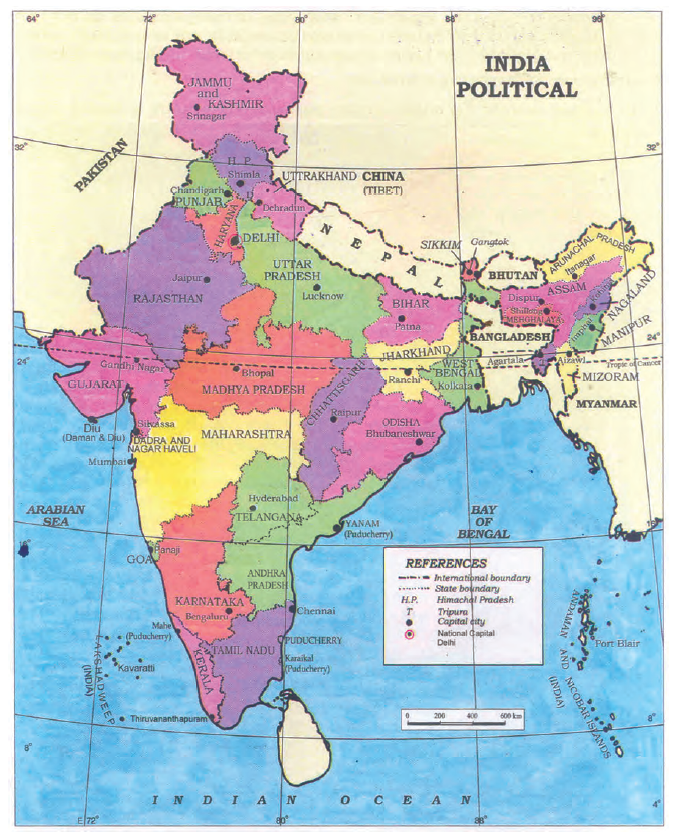Table of Contents
CHAPTER 10
Struggles for Equality
In this book, you have read about people like Kanta, the Ansaris, Melani and Swapna. The thread that connects all of these lives is that they have been treated unequally. What do people do when they face such inequalities? History is full of examples of persons who have come together to fight against inequality and for issues of justice. Do you recall the story of Rosa Parks in Chapter 1? Do you remember the photo-essay on the women’s movement in Chapter 5? In this chapter you will learn about some of the ways in which people have struggled against inequality.
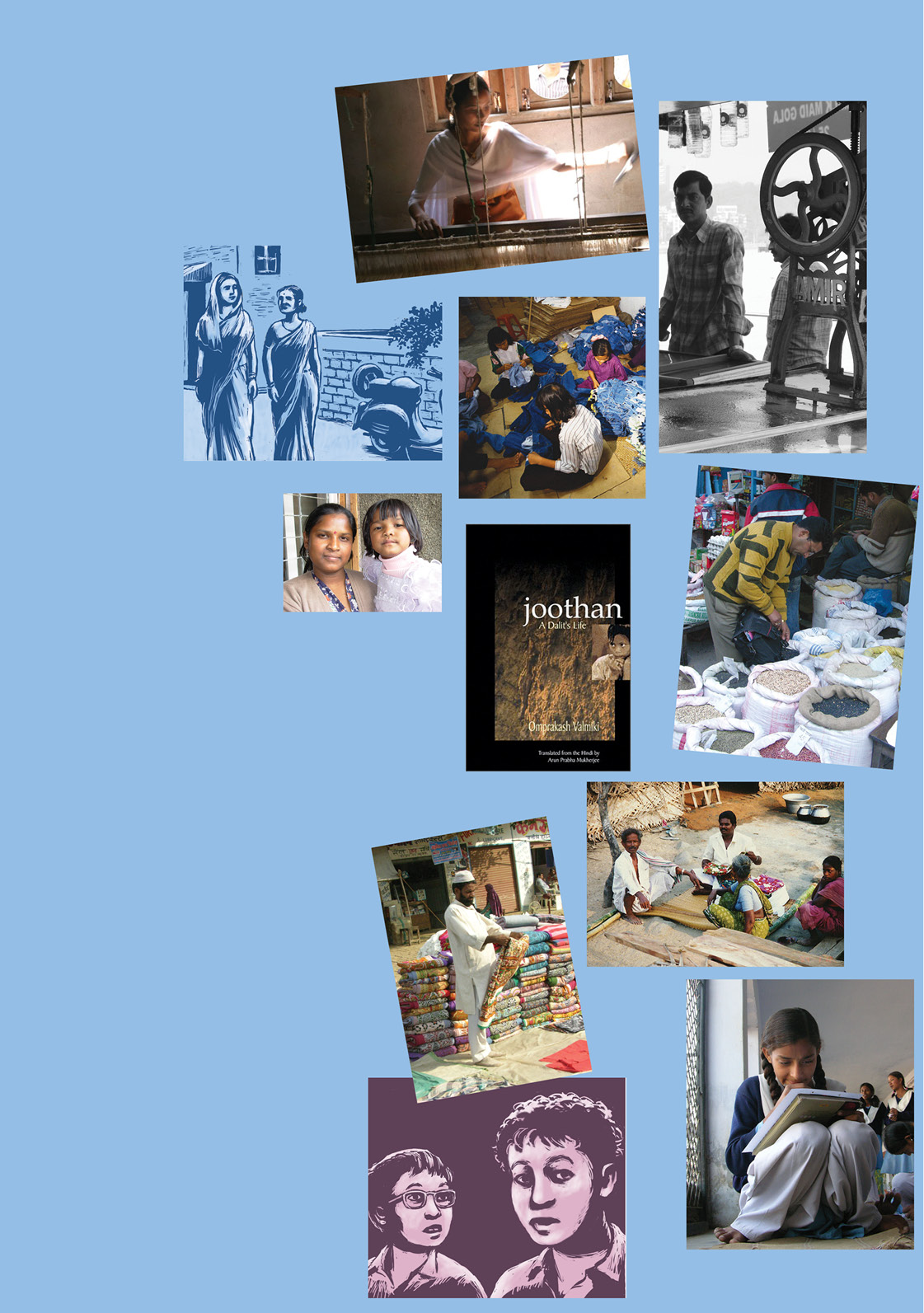
What do you think is meant by the expression ‘power over the ballot box’? Discuss.
But this feeling of equality that the ballot box provides, because the vote of one person is as good as that of another, does not extend to most people’s lives. As you have read, the increasing privatisation of health services and the neglect of government hospitals have made it difficult for most poor people like Kanta, Hakim Sheik and Aman to get good quality health care. These people do not have the resources to afford expensive private health services.
Similarly, the man who sells juice does not have the resources to compete with all of the major companies who sell branded drinks through expensive advertising. Swapna does not have sufficient resources to grow cotton and, so, has to take a loan from the trader to grow her crop. This forces her to sell her cotton at a lower price. Melani, like the millions of domestic workers across the country, is forced to endure the insults and hardship of working as a domestic help because she has no resources to set up something on her own. Poverty and the lack of resources continue to be a key reason why so many people’s lives in India are highly unequal.
On the other hand, the Ansaris were discriminated against not because they did not have the resources. In fact, despite having the money to pay the required rent, they were not able to find an apartment for over a month. People were reluctant to lease them an apartment because of their religion. Similarly, the main reason that the teachers forced Omprakash Valmiki to sweep the school yard was because he was Dalit. You’ve also read that the work women do
is often considered of less value than that done by the men. All of these persons are discriminated against primarily because of their social and cultural background as well as because they are women. Discrimination on the basis of a person’s religion, caste and sex is another significant factor for why people are treated unequally in India.
In India, it is the case that the poor consist of a majority of members of Dalit, Adivasi and Muslim communities and are often women.
Often, poverty and lack of dignity and respect for certain communities and groups come together in such powerful ways that it is difficult to identify where one aspect of inequality ends and the other begins. As you have read, Dalit, Adivasi and Muslim girls drop out of school in large numbers. This is a combined outcome of poverty, social discrimination and the lack of good quality school facilities for these communities.
Struggles for equality
Throughout the world – in every community, village, city and town–you will find that there are some people who are known and respected because of their fight for equality. These people may have stood up against an act of discrimination that they faced or which they witnessed. Or they may be well-respected because they treat all persons with dignity and are, therefore, trusted and called upon to resolve issues in the community.
Can you think of one person in your family, community, village, town or city whom you respect because of their fight for equality and justice?
Often, some of these persons become more widely recognised because they have the support or represent large numbers of people who have united to address a particular issue of inequality. In India, there are several struggles in which people have come together to fight for issues that they believe are important. In Chapter 5, you read about the methods used by the women’s movement to raise issues of equality. The Tawa Matsya Sangh in Madhya Pradesh is another example of people coming together to fight for an issue. There are many such struggles such as those among beedi workers, fisherfolk, agricultural labourers, slum dwellers and each group is struggling for justice in its own way. There are also many attempts to form cooperatives or other collective ways by which people can have more control over resources.
Tawa Matsya Sangh
When dams are built or forest areas declared sanctuaries for animals, thousands of people are displaced. Whole villages are uprooted and people are forced to go and build new homes, start new lives elsewhere. Most of these people are poor. In urban areas too, bastis in which poor people live are often uprooted. Some of them are relocated to areas outside the city. Their work as well as their children’s schooling is severely disrupted because of the distance from the outskirts of the city to these locations.
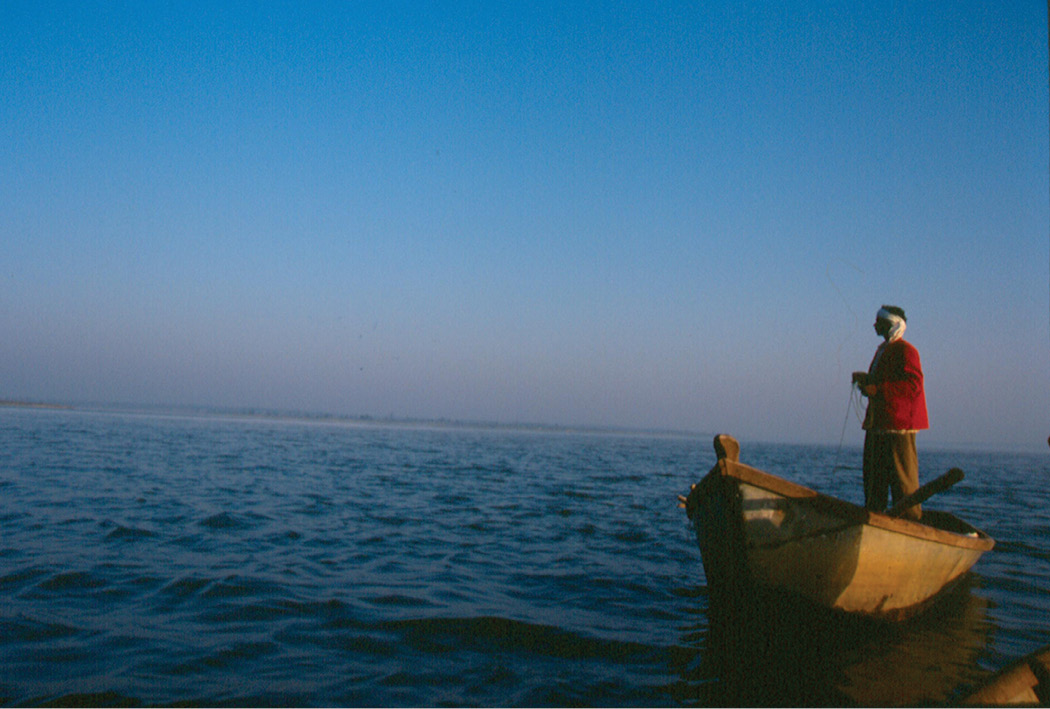
The reservoir of the Tawa river.
This displacement of people and communities is a problem that has become quite widespread in our country. People usually come together to fight against this. There are several organisations across the country fighting for the rights of the displaced. In this chapter we will read about the Tawa Matsya Sangh – a federation of Fisherworker’s cooperatives – an organisation fighting for the rights of the displaced forest dwellers of the Satpura forest in Madhya Pradesh.
Originating in the Mahadeo hills of Chindwara district, the Tawa flows through Betul, before joining the Narmada in Hoshangabad. The Tawa dam began to be built in 1958 and was completed in 1978. It submerged large areas of forest and agricultural land. The forest dwellers were left with nothing. Some of the displaced people settled around the reservoir and apart from their meagre farms found a livelihood in fishing. They earned very little.

A dam is built across a river at sites where one can collect a lot of water. This forms a reservoir and as the water collects it submerges vast areas of land. This is because the wall of the dam across the river is high and the water spreads over a large area. This is a photo of the submergence caused by the Tehri dam in Uttarakhand. The old Tehri town and 100 villages, some totally and some partially, were submerged by this dam. Nearly one lakh people were displaced.
What issue is the Tawa Matsya Sangh (TMS) fighting for?
Why did the villagers set up this organisation?
Do you think that the large-scale participation of villagers has contributed to the success of the TMS? Write two lines on why you think so.
In 1994, the government gave the rights for fishing in the Tawa reservoir to private contractors. These contractors drove the local people away and got cheap labour from outside. The contractors began to threaten the villagers, who did not want to leave, by bringing in hoodlums. The villagers stood united and decided that it was time to set up an organisation and do something to protect their rights.
The newly formed Tawa Matsya Sangh (TMS) organised rallies and a chakka jam (road blockade), demanding their right to continue fishing for their livelihood. In response to their protests, the government created a committee to assess the issue. The committee recommended that fishing rights be granted to the villagers for their livelihood. In 1996, the Madhya Pradesh government decided to give to the people displaced by the Tawa dam the fishing rights for the reservoir. A five-year lease agreement was signed two months later. On January 2, 1997, people from 33 villages of Tawa started the new year with the first catch.
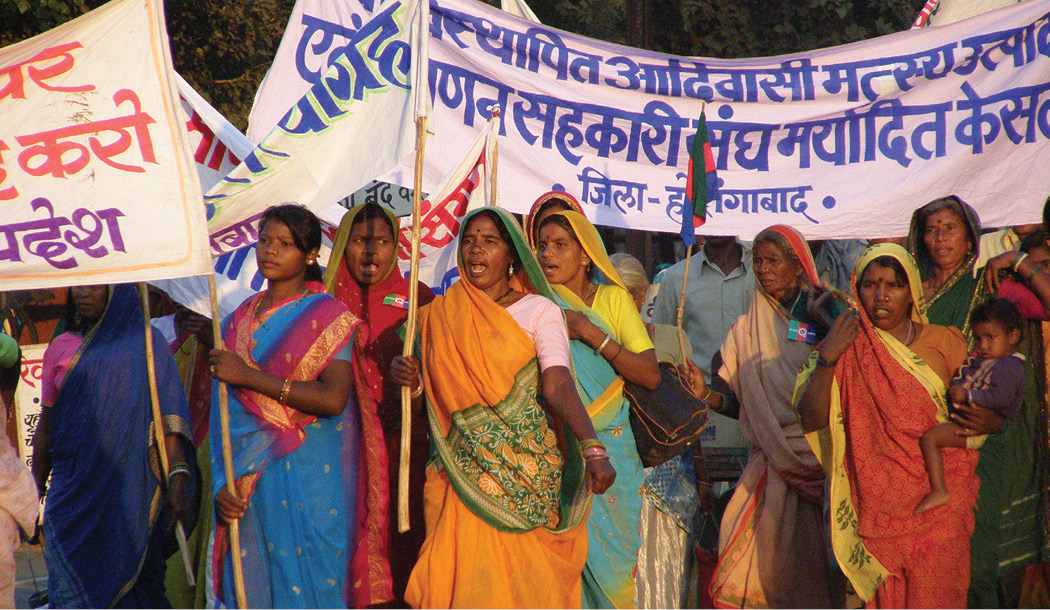
With the TMS taking over the fishworkers were able to increase their earnings substantially. This was because they set up the cooperative which would buy the catch from them at a fair price. The cooperative would then arrange to transport and sell this in markets where they would get a good price. They have now begun to earn three times more than they earned earlier. The TMS has also begun giving the fishworkers loans for repair and the buying of new nets. By managing to earn a higher wage as well as preserving the fish in the reservoir, the TMS has shown that when people’s organisations get their rights to livelihood, they can be good managers.
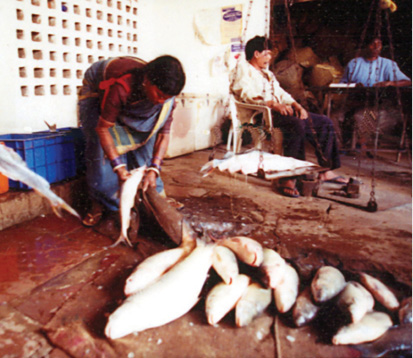
Top: Members of the TMS protesting at a rally. Above: A member of the cooperative weighing the fish.
Can you think of an incident in your life in which one person or a group of people came together to change an unequal situation.
Adaptation of a song written as part of the Right to Information campaign by Vinay Mahajan:
The Right To Know
My dreams have the right to know
Why don’t they ever come true
What is your favourite line in the above song?
What does the poet mean when he says, “My hunger has the right to know”?
Can you share with your class a local song or a poem on dignity that is from your area?
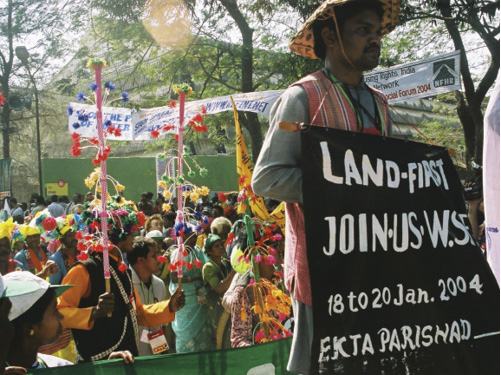 While some join protest movements to fight inequality, others might use their pen, or their voice, or their ability to dance to draw attention to issues of inequality. Writers, singers, dancers and artists have also been very active in the fight against inequality. Often, poems, songs and stories can also inspire us and make us believe strongly in an issue and influence our efforts to correct the situation.
While some join protest movements to fight inequality, others might use their pen, or their voice, or their ability to dance to draw attention to issues of inequality. Writers, singers, dancers and artists have also been very active in the fight against inequality. Often, poems, songs and stories can also inspire us and make us believe strongly in an issue and influence our efforts to correct the situation. The Indian Constitution as a living document
The foundation of all movements for justice and the inspiration for all the poetry and songs on equality is the recognition that all people are equal. As you know, the Indian Constitution recognises the equality of all persons. Movements and struggles for equality in India continuously refer to the Indian Constitution to make their point about equality and justice for all. The fishworkers in the Tawa Matsya Sangh hope that the provisions of the Constitution will become a reality through their participation in this movement. By constantly referring to the Constitution they use it as a ‘living document’, i.e., something that has real meaning in our lives. In a democracy, there are always communities and individuals trying to expand the idea of democracy and push for a greater recognition of equality on existing as well as new issues.
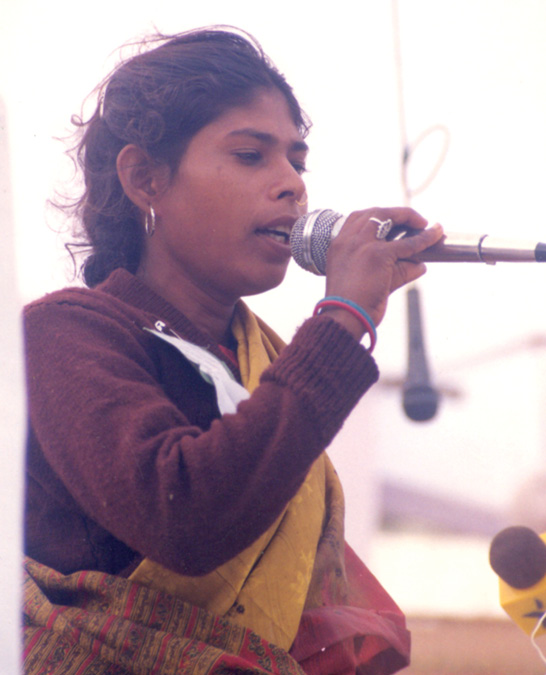
Over 1,500 persons attended a public hearing in Lucknow in 2001 to protest violence against women. Over 15 cases of violence against women were heard by a jury of eminent women who played the role of judges. This people’s jury helped highlight the lack of support in the legal system for women who seek justice in such cases.
Issues of equality are central to a democracy. In this book, we have tried to highlight issues that pose a challenge to this idea of equality in a democracy. These, as you have read, include the privatisation of health services in the country, the increasing control that business houses exert on the media, the low value given to women and their work, and the low earnings made by small farmers who grow cotton. These issues substantially affect poor and marginalised communities, and therefore, concern economic and social equality in the country.
This is the core of the struggle for equality in a democracy. The dignity and self-respect of each person and their community can only be realised if they have adequate resources to support and nurture their families and if they are not discriminated against.
What role does the Constitution play in people’s struggles for equality?
Can you make up a social advertisement on equality? You can do this in small groups.
References
◆ Dreze, Jean and Aparajita Goyal. 2003. ‘Future of Mid-day Meals’. In Economic and Political Weekly.
◆ Hossein, Sakhwat Rokeya. 1905. (reprint) 1988. Sultana’s Dream. Feminist Press, New York.
◆ Kumar. Krishna. 1986. “Growing Up Male” in Seminar 318.
◆ Mazumdar, Indrani. 2007. Women and Globalization: The Impact on Women Workers in the Formal and Informal Sectors in India. Stree, Kolkata.
◆ Mead, Margaret. 1928, 1973. (edition) Growing Up In Samoa. American Museum of Natural History, Washington D.C.
◆ Medical Council of India, http://www.mciindia.org/Rules-and- Regulation/Ethics%20Regulations-2002.pdf
◆ Parks, Rosa. 2000. Quiet Strength. Grand Rapids, Zondervan, Michigan.
◆ Rashsundari Devi. 1999. Words to Win. Translated and with an introduction by Tanika Sarkar. Zubaan, New Delhi.
◆ Roy, Tirthankar. 1999. ‘Growth and Recession in Small-Scale Industry: A Study of Tamil Nadu Powerlooms’ Economic and Political Weekly.
◆ Supreme Court of India, Paschim Banga Khet Mazdoor Samity of Ors. Vs. State of West Bengal & Anr. (Hakim Seikh case, date of judgment: 6 May 1996, http://judis.nic.in/supremecourt/imgs1.aspx?filename=15597)
◆ Valmiki, Omprakash. 2003. Joothan: A Dalit’s Life. SAMYA, Kolkata.
◆ World Health Organization, Essential medicines and health products, http://www.who.int/medicines/services/inn/en/
◆ www.cehat.org/rthc/policybrieffinal.pdf
◆ www.infochangeindia.org
◆ Zubaan. 1996. Poster Women: A Visual History of the Women’s Movement in India. Zubaan, New Delhi.
© Government of India, Copyright 2006
1. The responsibility for the correctness of internal details rests with the publisher.
2. The territorial waters of India extend into the sea to a distance of twelve nautical miles measured from the appropriate base line.
3. The administrative headquarters of Chandigarh, Haryana and Punjab are at Chandigarh.
4. The interstate boundaries amongst Arunachal Pradesh, Assam and Meghalaya shown on this map are as interpreted from the “North
Eastern Areas (Reorganisation) Act, 1971,”but have yet to be verified.
5. The external boundaries and coastlines of India agree with the Record / Master Copy certified by Survey of India.
6 The state boundaries between Uttarakhand & Uttar Pradesh, Bihar & Jharkhand and Chhattisgarh & Madhya Pradesh have not been
verified by the Goverments concerned.
7. The spellings of names in this map have been taken from various sources.

